Mammillaria albilanata is one of attractive and unique cactus species in the genus Mammillaria. Many people are attracted to this plant due to its wool-like appearance and beautiful flowers.
It is possible you haven’t heard about this plant before. If so, today you are gonna learn so much about this unique cactus species.
So let’s get to know the plant.
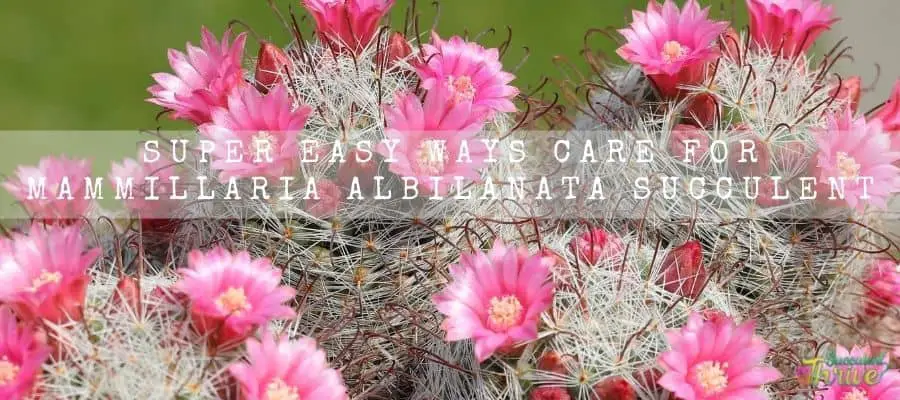
What is Mammillaria albilanata?
Mammillaria Albilanata is a wooly cactus which has densely packed spines. Scientifically they belong to the Mammillaria genus.
They normally do not produce branches. But you could spot them branching occasionally. They would produce showy carmine flowers as well.
Mammillaria Albilanata cactus are native plants in Mexico, and you could mainly spot them in the states of Chiapas, Colima, Guerrerio, Oaxaca and in Puebla as well.
Mammillaria Albilanata cactus grows at altitudes between 500 and 2200 m.
In terms of habitat, they would usually grow in deserts.
How do I identify a Mammillaria albilanata?
You could identify them by looking at their densely covered white wool layer which resembles a large fraction of the visible solar radiation.
That could be beneficial in protecting the plant from intense sunlight as well. Mammillaria Albilanata cactus are sets of plants which you cannot commonly find.
In addition to that, they would comprise tubercles which you could spot in gray green colors. They would tend to take a spiraling firm look.
Those tubercles would not carry latex. Moreover, axills are coarsely woolly.
When it comes to central spines, they would be stiff and form in a straight manner. They are as short as 2-3 mm in length. The colors of the central spines would be white cream or pale yellow.
Moreover, they would contain brown tips as well. On the other hand, Mammillaria Albilanata cactus would carry radial spines too.
They are also stiff just like the central spines. They tend to take a straight to slightly curved shape. You could spot them in white color. In terms of the length, they would be about 2- mm.
Size
Mammillaria Albilanata cactus have fibrous roots. They would further consider flattened spherical stems too.
Additionally, they tend to take an elongated or short cylindrical shape as well. They would be 15 cm in height and 8 cm in diameter.
Growth
Mammillaria Albilanata cactus is a slow growing cactus type. They grow very easily when you provide them with an adequate amount of water along with good ventilation.
You need to make sure you are watering them properly so that they can have vigorous growth in return.
Mammillaria Albilanata are special cacti since they could produce flowers during their early stages.
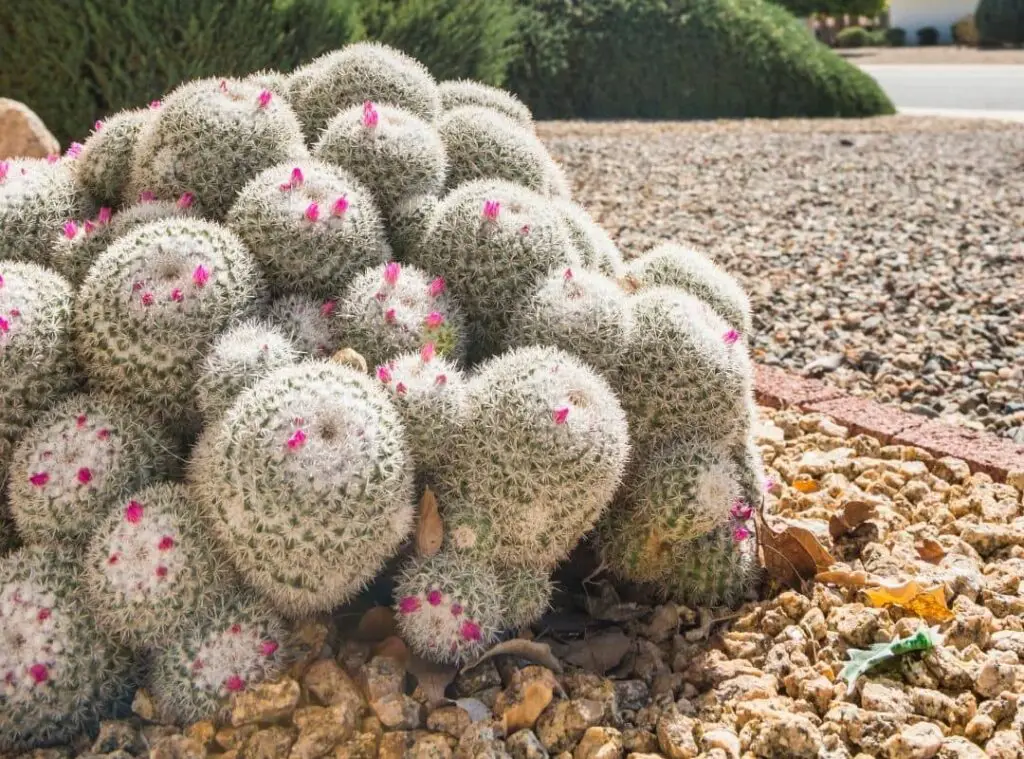
One look care guide
| Botanical Name | Mammillaria Albilanata |
| Plant Type | Cactus |
| Mature Size | 15 cm in height and 8 cm in diameter as well. |
| Sun Exposure | Full Sunlight to partial sunlight |
| Soil Type | Well draining |
| Soil pH | Around 6 |
| Bloom Time | Spring |
| Flower Color | carmine to purplish pink to pink. |
| Hardiness Zones | USDA hardiness zone – 8b |
| Native Area | Mexico |
| Toxicity | Non Toxic |
| Average price | 7 USD |
How do you take care of a Mammillaria albilanata?
Light Requirement
Mammillaria Albilanata would perform well under full sunlight and in partial sunlight. Ideally you should expose them to full sunlight during morning hours.
On the other hand, you could expose them in partial sunlight ideally during the afternoon hours. If you are growing them indoors, you could expose them to direct sunlight.
That would be quite beneficial to encourage flowering. Apart from that, it will contribute to the heavy spine production as well.
Temperature and humidity
Mammillaria Albilanata would require warmer temperatures to grow well. Avoid exposing them to colder temperatures for prolonged times since it could badly affect the plant.
Is it cold hardy?
Mammillaria Albilanata cactus are frost hardy up to 32 degrees Fahrenheit (0 degrees Celsius).
Hardiness Zone
USDA hardiness zone – 8 to 11
Watering Requirement
When watering Mammillaria Albilanata cactus, you should water them carefully only when their top layer of the soil is dry when you touch it.
Mammillaria Albilanata are quite vulnerable to root rot. As such, ensure that you let all the excess water drain through without letting them get retained in the pot.
On the other hand, you should water them from the base of the plant. If you water them from above, chances are that their healthy spines will retain water and cause rot in the plant.
Cut back in watering during the winter season.
When watering the Mammillaria Albilanata cactus during their growing season, you could simply first check whether the soil is dry and only then start watering them.
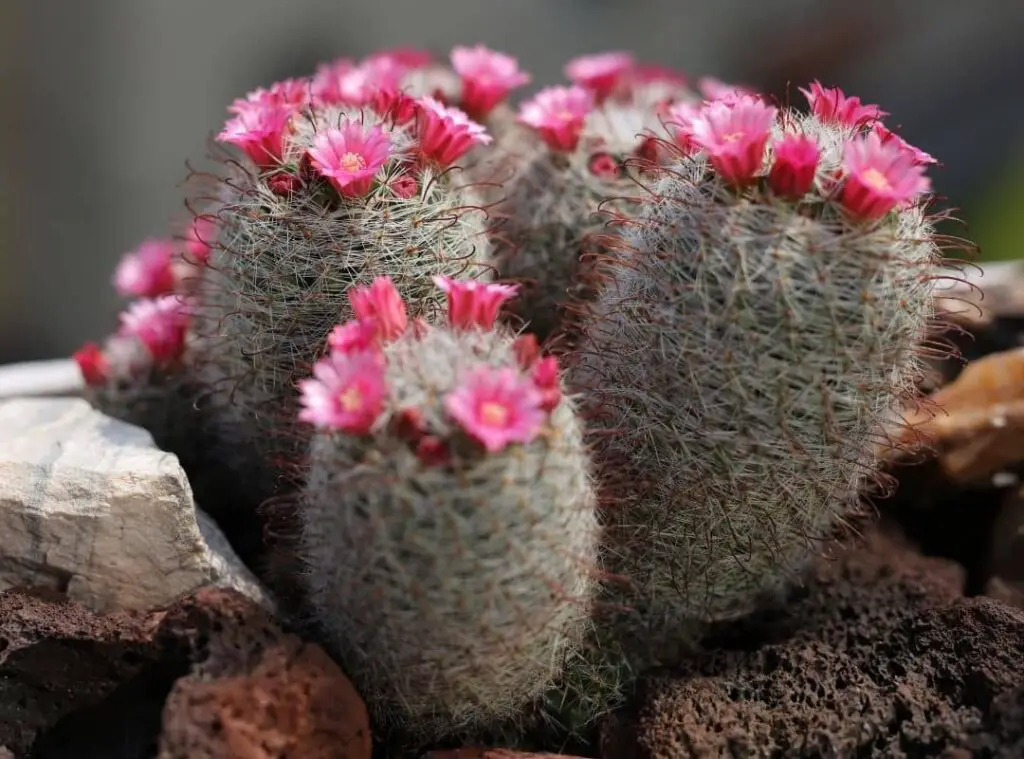
Soil Requirement Type / Ph
Mammillaria Albilanata would require a well-draining soil mix with pH range from 5 to 7. Ideally, you could go ahead and plant them in a cactus soil mix.
It should not contain less than 50 % of grit though. Apart from that, avoid using peat and other humus sources in the mix.
Flowering and Fragrance
Mammillaria Albilanata cactus flowers are small. In fact, they would be just 7-8 mm in size. They would not carry any fragrance as well.
They would usually form in a circle as a crown of the plant. Colors of the Mammillaria Albilanata cactus would be carmine to purplish pink to pink.
Blooming season of Mammillaria Albilanata cactus would be late spring. On the other hand, they would produce a fruit which is pink to red in color.
They would further consist of pale brown colored seeds as well.
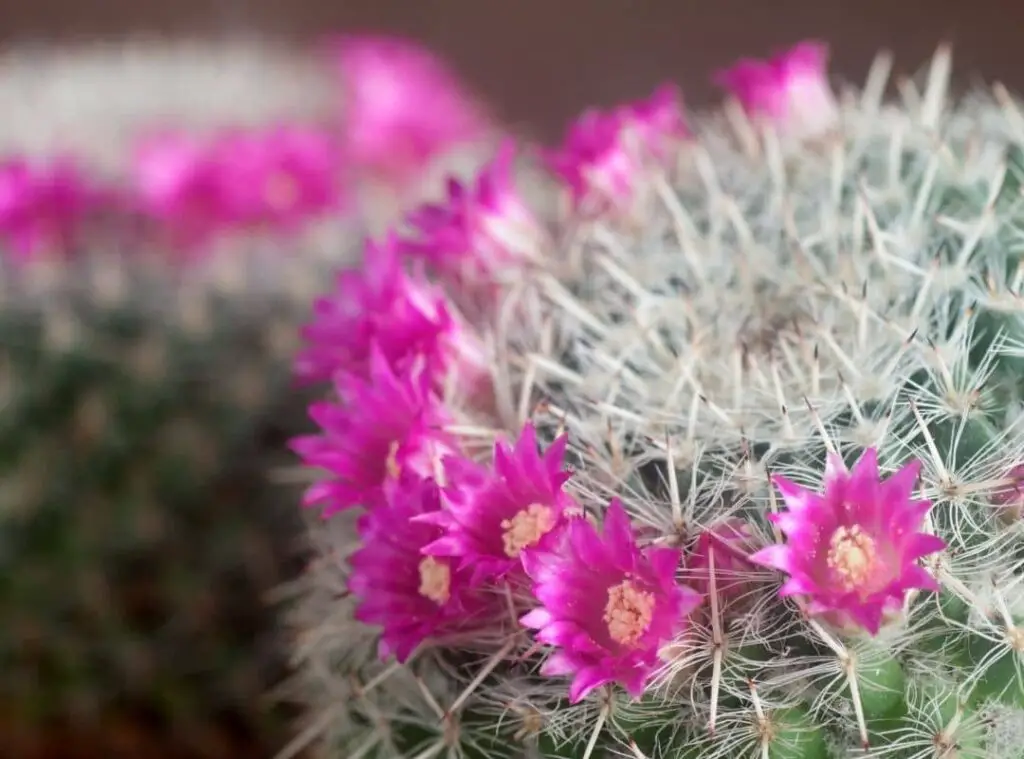
Pot size Potting and Repotting
You could consider repotting the Mammillaria Albilanata cactus once every two to three years. Best is to use small sized pots when repotting them without going for larger pots. To do that,
- You may first water the plant so that it will loosen up the soil. After that remove the pot whilst holding on to the plant tightly.
- Do not pull the trunk or the branches of the plant branches. In case you cannot take the pot off, you could consider cutting off the soil using a knife. Alternatively, you may also give a gentle tap for the pot with a tool.
- As the next step, you should prune the roots. Especially the ones which look unhealthy, moldy, rotten and dead.
- On the other hand, if both your soil and the roots are healthy, avoid touching the root ball as it could cause stress to the plant.
- You need to clean the new pot and ascertain that it is free of old soil. When cleaning , you could wash it with soap.
- After that, rinse it well and let it dry. In case if you do not use clean pots, that will pave the way for unwanted fungal infections in the Mammillaria Albilanata cactus.
- Next, you could add soil in the pot. When you do that, ensure that the right amount of root ball is placed in the pot.
- Ideally it has to be placed a few inches under the edge of your pot. If you place it a little high chances are that there could be overflow of water when you water them.
- As such, place the plant properly and make sure it is well established. After that you could add soil around the plant.
- Further make sure it is planted in the same depth as what it was before in the older pot. After some time, you could water the Mammillaria Albilanata cactus plants.
Where to Plant
Locate them in a place where they get full sunlight in the morning and partial sunlight in the afternoon.
In addition to that, avoid exposing these plants to colder temperatures for a prolonged period.
Fertilizer and time of year
You could consider feeding the Mammillaria Albilanata with a fertilizer which has a high amount of potassium and phosphorus.
Further it has to be a fertilizer which has a low amount of nitrogen as well. You could feed them during the summer season which is their active growing season.
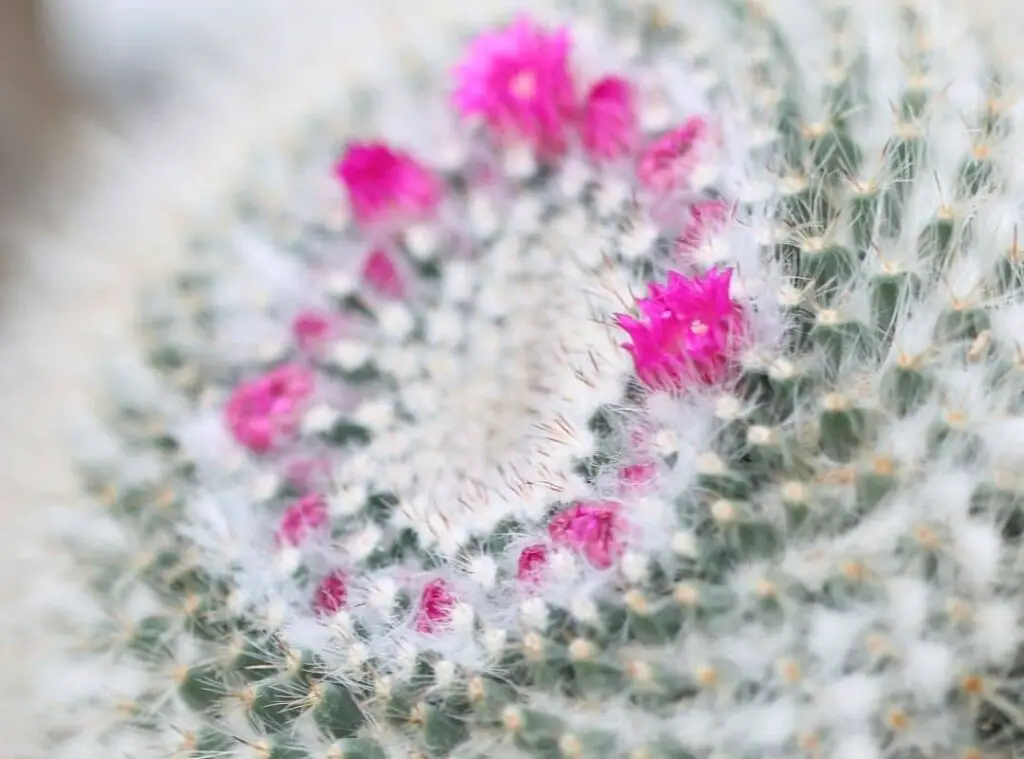
Dormancy
Mammillaria Albilanata cactus plants are winter dormant plants.
Can be toxic to pets
Mammillaria Albilanata are Nontoxic for pets.
Handling the plant
You need to make sure that you do the watering as appropriate since that will be very important in terms of taking care of these plants.
Further make sure that you are fulfilling its sunlight requirement too. Further ensure that you are growing them in the right soil mix as well.
Common bugs and illness issues
Mammillaria Albilanata cactus are porn get attacked by so many insect types. Having said that, if you take care of them properly and if your plants are healthy , they would be more resistant towards the pests.
Red spiders – Red spiders could harm these plants. You could overcome them by simply misting the plants on a daily basis whilst making sure that you do not over water them.
Mealy Bugs – chances are that they would develop aerial into the new growth in the wool. Consequently, it will badly impact on the health of the Mammillaria Albilanata cactus as well. You could treat them with a fungicide. They could be so annoying since you cannot identify them with your naked eyes.
Scales – These annoying creatures would also create problems for the Mammillaria Albilanata cactus but very rarely though.
Root rot – just like with other cactus and succulents, you should ensure that you are watering these plants accurately so that you will not end up over watering the plants. Unless there is a high potential of having root rots in the plant. If the root rot has occurred on a greater level, there is nothing much you could do to rescue the plant.

Special Care tips
There is nothing special you have to do when caring for the Mammillaria Albilanata cactus.
However, you need to ascertain that you are providing the right growing conditions and the right care treatments for them.
You will be rewarded with a beautiful plant in return when you take care of them well.
How do you propagate a Mammillaria albilanata?
You could sow after the last frost. Unless you could consider propagating them from using cuttings as well.
That is not common though. In addition to that, seeds germination could also take place within one week to two weeks’ time. However, that would happen in the spring season.
Mammillaria albilanata plant benefits
Mammillaria Albilanata cactus could be great picks for garden rockery settings. Further you could use them for desert type landscapes, patios and botanical gardens.too.
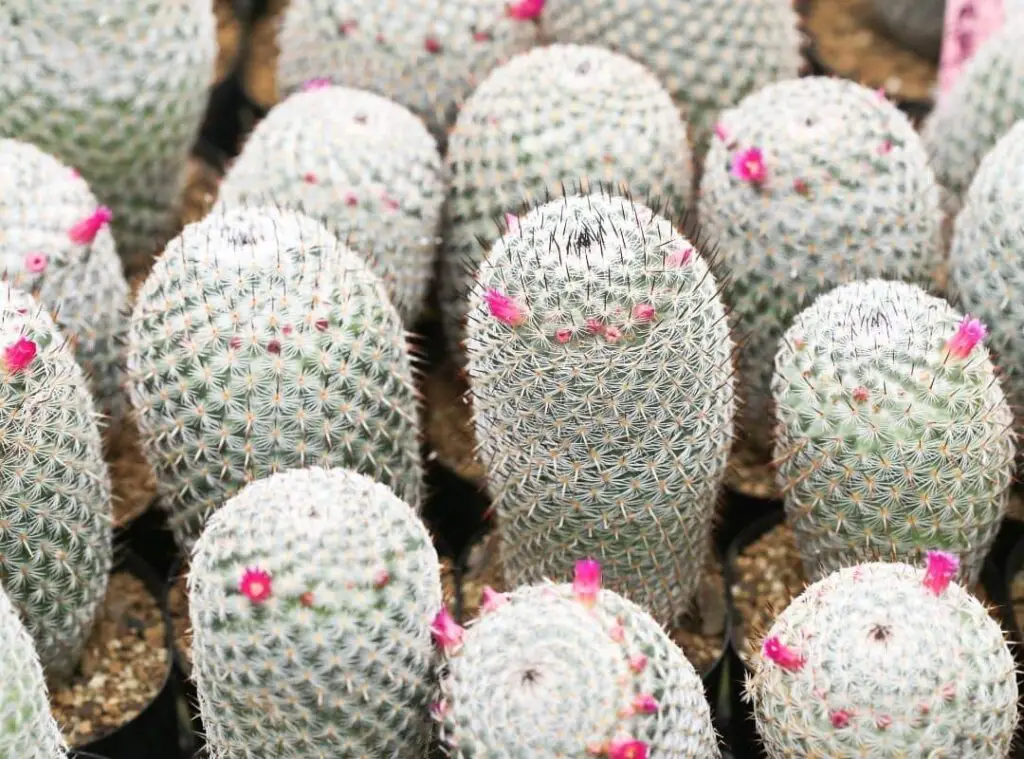
Related questions
Is Mammillaria albilanata an indoor plant?
Mammillaria Albilanata cactus would be handy as indoor plants. But you need to provide the right amount of sunlight to the plant.
If you are interested in planting this plant indoors keep it close to a window for good results.
Do Mammillaria albilanata need direct sunlight?
Mammillaria Albilanata cactus will thrive in direct sunlight if you grow them as indoor plants.
However, if you grow outdoors, Best is to provide them full sunlight in the morning and partial sunlight in the afternoon.
Can Mammillaria albilanata be rooted in water?
Mammillaria Albilanata as well as many cacti can be rooted in water. You just have to follow the general procedure to root them in water.
Should I mist my Mammillaria albilanata?
No You should not mist Mammillaria Albilanata cactus. Since they are desert cactus watering overhead and misting should be avoided.
Those activities can lead to mold and brittle roots in the Mammillaria albilanata plant.
Read Next: 16 Care Secrets For Your Amazing Conophytum Maughanii Succulent
